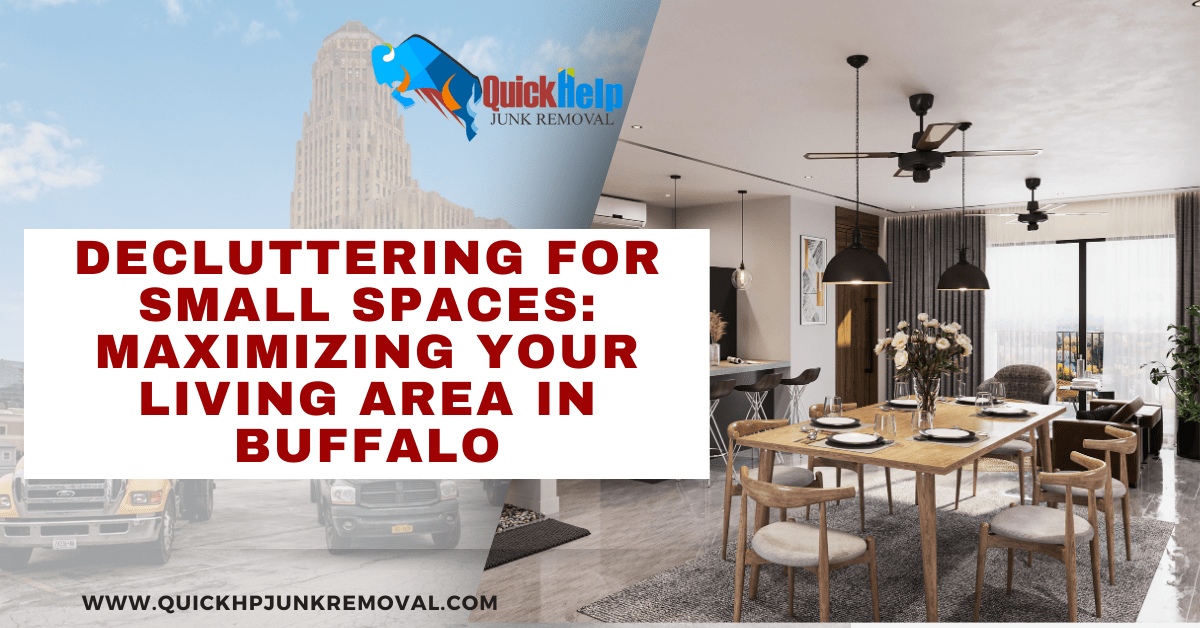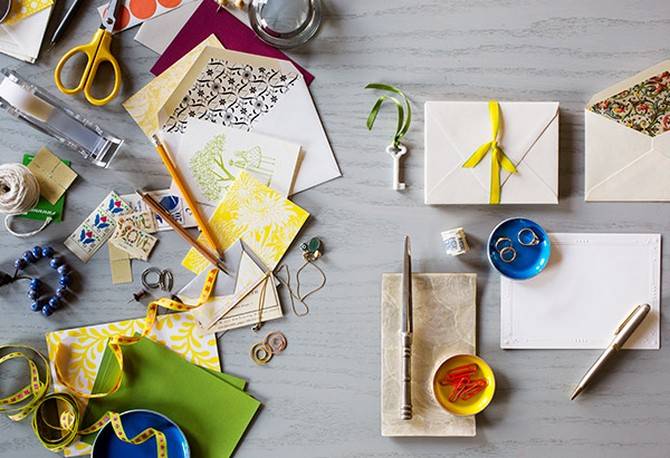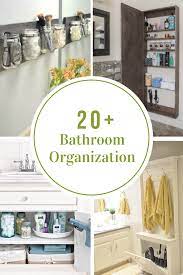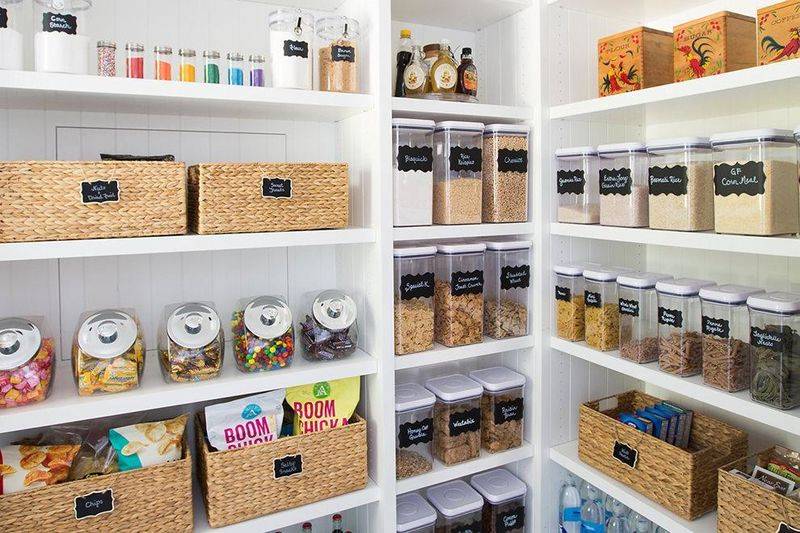Living in a small space can be both charming and challenging. Whether you’re in a cozy apartment downtown or a quaint house in the suburbs, maximizing your living area is essential for comfort and functionality. As a professional in the junk removal industry, I’m here to share some practical tips on how to declutter and make the most of your small living space in Buffalo. Let’s get started!
Assessing Your Space
Understanding Your Needs
Before diving into the decluttering process, it’s important to understand your specific needs and goals. Take a walk through your home and identify areas that feel cluttered or disorganized.
Identify Problem Areas: Is your kitchen overflowing with gadgets you rarely use? Is your closet packed with clothes you haven’t worn in years? Make a list of areas that need attention.
Define Your Goals: What do you want to achieve with this decluttering project? More storage? Better flow and functionality? Clear goals will guide your efforts and keep you motivated.
Creating a Plan
Once you’ve assessed your space, it’s time to create a plan. A well-thought-out plan will make the decluttering process more manageable and less overwhelming.
Room-by-Room Assessment: Tackle one room at a time. This approach prevents you from feeling overwhelmed and allows you to see progress more quickly.
Setting Realistic Timelines: Decide how much time you can dedicate to decluttering each day or week. Be realistic about what you can accomplish in a given timeframe.
Decluttering Strategies
The KonMari Method
One of the most popular decluttering methods is the KonMari Method, created by Marie Kondo. This approach focuses on keeping only items that “spark joy.”
How to Apply the KonMari Method:
- Category by Category: Instead of tackling one room at a time, declutter by category (e.g., clothes, books, papers).
- Hold Each Item: Ask yourself if the item sparks joy. If not, thank it for its service and let it go.
The Four-Box Method
Another effective strategy is the Four-Box Method. This method involves sorting items into four categories: Keep, Donate, Sell, and Trash.
Benefits of Categorizing Items:
- Keep: Items you use regularly and love.
- Donate: Items in good condition that can help others.
- Sell: Items of value that you no longer need.
- Trash: Items that are broken, worn out, or unusable.
One-In, One-Out Rule
To maintain a clutter-free space, adopt the One-In, One-Out Rule. For every new item you bring in, remove one existing item.
Long-Term Benefits for Small Spaces:
- Prevents Overcrowding: Helps keep your space balanced and prevents accumulation.
- Encourages Mindful Purchasing: Makes you think twice before buying new items.
Storage Solutions for Small Spaces
Utilizing Vertical Space
When floor space is limited, look up! Vertical storage can dramatically increase your storage capacity.
Shelving Units: Install shelves on your walls for books, decor, and everyday items.
Wall-Mounted Storage: Use hooks and racks to hang items like bikes, kitchen utensils, and tools.
Multi-Functional Furniture
Furniture that serves multiple purposes is a game-changer in small spaces.
Examples of Multi-Functional Furniture:
- Sofa Beds: Perfect for guests and everyday lounging.
- Ottomans with Storage: Great for storing blankets, toys, or other items.
- Extendable Dining Tables: Ideal for small dining areas that occasionally need extra space.
Hidden Storage Options
Make use of hidden spaces in your home for additional storage.
Under-Bed Storage: Utilize bins or drawers to store items under your bed.
Behind-Door Organizers: Hang organizers on doors to store shoes, accessories, or cleaning supplies.
Using Nooks and Crannies: Get creative with small, unused spaces. Install small shelves in corners or use baskets to keep items organized.
Organization Tips
Creating Zones
Dividing your living space into zones can help keep things organized and functional.
Benefits of Zoned Organization:
- Designated Areas for Activities: Create specific areas for different activities (e.g., a reading nook, a workspace).
- Easy Access: Items related to each activity are kept in their respective zones, making them easier to find and use.
Labeling and Sorting
Keeping your space organized is easier when everything has a designated place.
Importance of Labeling: Clearly label storage bins and shelves to easily identify contents.
Sorting Items: Group similar items together to make finding things a breeze.
Regular Maintenance
Decluttering isn’t a one-time task. Regular maintenance is key to keeping your space tidy.
Establish a Decluttering Routine: Set aside time each month to go through your space and remove items you no longer need.
Tips for Keeping Small Spaces Tidy:
- Daily Clean-Up: Spend a few minutes each day tidying up.
- Monthly Purge: Go through each zone monthly and declutter.
Decluttering Resources in Buffalo
Local Donation Centers
Buffalo has several donation centers where you can drop off items you no longer need.
List of Donation Centers:
- Goodwill: Accepts clothing, household items, and more.
- Habitat for Humanity ReStore: Takes furniture, appliances, and building materials.
- Buffalo City Mission: Accepts clothing, furniture, and household goods.
Junk Removal Services
Sometimes, you need professional help to tackle bigger decluttering projects.
Benefits of Using Professional Junk Removal:
- Time-Saving: We handle the heavy lifting and disposal.
- Efficient and Eco-Friendly: We sort items for recycling and donation, minimizing waste.
How Buffalo Junk Removal Experts Can Help:
- Comprehensive Services: From small cleanouts to major decluttering projects.
- Friendly and Professional Team: We’re here to make the process easy and stress-free.
Recycling Options
Proper recycling is crucial for reducing waste and protecting the environment.
Local Recycling Facilities:
- Erie County Recycling Center: Accepts paper, cardboard, glass, and more.
- Buffalo Recycling Enterprises: Handles a wide range of recyclable materials.
What Can and Cannot Be Recycled: Check with local facilities for specific guidelines.
Decluttering your small space can significantly enhance your quality of life. By following these strategies and tips, you can create a more organized, functional, and enjoyable living area.











